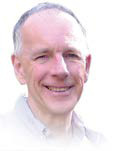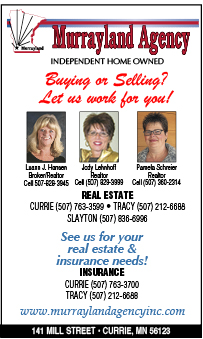Memoirs of a Tracy Kid
Several months ago, I wrote about my interest in radios which led me to pursue an amateur radio license while still in high school.
I first stumbled across amateur radio when I built my first Heathkit short wave radio receiver while in 7th grade. With this radio in my bedroom, I could listen to the AM band and all the Twins baseball games.
It also covered the shortwave bands which at night allowed me to hear radio stations from as far away as Europe and South America. I remember listening to English speaking stations such as Radio Free America and a very strong station from Quito, Ecuador called HCJB and was known as the “Voice of the Andes.”
I also found that I could hear what sounded like citizen band (CB) radio operators but over much longer distances than what was possible with regular CB radios. I learned that these radio operators were called “Hams” and they had amateur radio licenses. They communicated with each other using both Morse Code and voice conversations using either AM or the new Single Sideband mode of communication that was also used on the early manned space flights.
As I listened in on these Ham radio operators talking to each other, I was determined that I could do the same thing and I was inspired to get my ham radio license. In the 1960s, the only way most people could talk to someone over great distances was to use a telephone and if they wanted to talk to someone in another country, they needed to have an operator place the call and the cost per minute was astronomical.
When I got married in 1971, my wife and I spent 7 weeks hiking all over Europe and we checked in every few weeks with our parents with a phone call.
In Paris, for example, we had to go to the main Post Office to place our call. We stood in a long line and once we reached the window to place a “collect” phone call back to the United States, the attendant took our information and said they would call us on the Public Address system when the call was ready. When it was our turn, we went into a phone booth and had a quick threeminute call back to the states which I later found out cost my parents almost $20.
In my pursuit of ham radio, the first thing I discovered was to become a ham radio operator, you needed to pass a series of tests administered by the Federal Communications Commission (FCC) in their only office in Minnesota which was located in the Twin Cities. This was very different than getting a CB license which only required filling out an application and sending in a fee to the FCC. The disadvantage of a CB radio was its power was limited to 5 watts and due to the operating frequencies used by CB, the maximum range was around 10 miles and the range of a lower powered CB walkie talkie was 1-2 miles. Ham radio operators by comparison could use up to 1000 watts, the same power as used by small commercial AM radio stations, and talk to people all over the world.
Back in the 1960’s, the entry level amateur radio license was called the novice license. To earn this license, you needed to learn the Morse code and be able to send and receive Morse code messages at a speed of five or more words per minute.
You also had to pass a written test which covered basic questions covering radio theory and rules and regulations governing amateur radio operators. I had been listening to ham radio operators for several years when I learned that Layton Traver, who was our preacher’s son, was a ham.
Layton was two years older than I and I knew him from our youth group at church. I told him of my interest in ham radio and he invited me to come over to his house one Sunday afternoon. He took me up to his second-floor bedroom where he had a big amateur radio transmitter and receiver on his desk with glowing tubes and Morse code emanating from a loudspeaker on top of the receiver. Layton had earned his general class license by then and was able to operate on the voice bands. He proceeded to make a contact with a ham operator in northern Minnesota and let me talk to the ham. I was hooked and decided then and there to become a ham.
At that time, the only hams in Tracy were Layton, his good friend and classmate, Bob Purves, and two other hams, Bruce Mowery and Leroy Young. I continued to hang out with Layton on the weekends as he became what hams call my “Elmer”, which is ham slang for mentor. Layton’s Elmer was a local ham, Lavern Ingalls, who was a long-time funeral director with the Ohman Funeral Home in Tracy. Mr. Ingalls unfortunately had passed away by the time I became interested in ham radio.
This first thing I did after spending time with Layton was purchase a much better short-wave receiver made by the Layfette Radio Co. in kit form which I assembled. This radio vastly increased the number of signals I could hear and helped me learn the Morse Code. I also purchased a book from a ham organization called the ARRL which was intended for beginner hams. It covered radio theory and regulations that would be included on the novice exam. But before I could take the novice exam, Layton graduated from Tracy High School and without an Elmer, my progress towards getting my ham license slowed down.
Fortunately, this is the same time I discovered that Greg Von Bokern, who was two years younger than I, had recently gotten his ham license. I first met Greg at a science fair held at St. Mary’s Catholic School in Tracy in the spring of 1965. That fall he started 9th grade at THS and we became friends through our mutual interest in the science club and ham radio. With Greg’s help, I finally learned Morse code and took my novice exam in the spring of 1966 which I passed on my first try. The novice license allowed me to communicate with other hams using Morse Code only. I spent the summer and fall of 1966 communicating with other hams across the country.
Greg also loaned me an army surplus code practice machine which used reels of punched paper which played Morse Code through a set of headphones. Using the machine, I could control the speed of the recorded code and eventually got my ability up to 15 words a minute which was fast enough to earn the next class of amateur radio license, the general class which would allow me to use voice communication.
I also had to study advanced radio theory and learn various rules and regulations to pass the written test for the new license. In November 1966, my dad drove me up to the Twin Cities and on the Friday after thanksgiving I took the general class test at the FCC office in St. Paul. I passed my test on the first try and had to wait for a month to get my new license in the mail.
Ham radio has been a lifelong hobby for me and has allowed me to stay in touch with my ham buddy, Greg Von Bokern, over the years. Greg and I now both live on the west coast and talk to each other most weekends using our ham radios. AM radio also proved to be a very important tool for handling emergency communications in the summer of 1968 in the aftermath of the infamous Tracy tornado. This story is covered in more detail in the Headlight Herald 50th anniversary edition covering the Tracy tornado published in the June 13, 2018, edition which.
Tracy residents might also be interested to know of other well-known members of our community who became ham radio operators after they retired. These hams include Don Hicks who was a veterinarian for many years and Wendell Anderson who was the president of the Tracy bank.
Ham radio has changed with the times. There is no longer a requirement to learn Morse Code to get a license, and ham radio has evolved to include many digital modes of communications. There are also shorter-range hand-held radios which use a repeater type system similar to which the current cell phone system was initially based. Remember, when the next disaster strikes and the power is off and your cell phone doesn’t work, there will hopefully be amateur radio operators nearby with portable generators powering their radios to provide emergency communications coverage.
Next month: Viet Nam War




